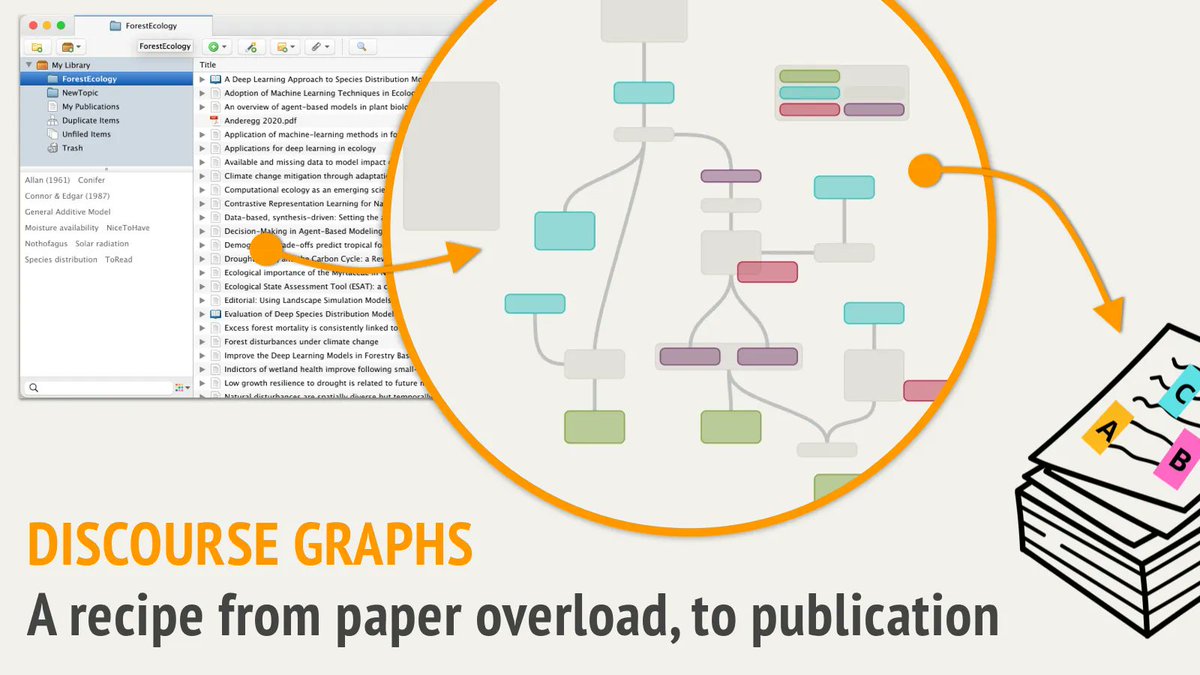
Declining Disruption.
#ScienceTwitter is abuzz with this recently published nature article.
I read into the study and 100s of comments.
Consensus: Grants and journals are to blame.
But the authors give a much better, more personal insights.
Here's what I learned:
👇
#ScienceTwitter is abuzz with this recently published nature article.
I read into the study and 100s of comments.
Consensus: Grants and journals are to blame.
But the authors give a much better, more personal insights.
Here's what I learned:
👇

💡Define Disruption:
Suppose I publish a study S that cites X,Y,Z.
If disruptive:
Subsequent work will cite S primarily, as X,Y,Z are "obsolete".
Consolidating:
S,X,Y and Z will be cited. As all are still relevant.
They validate it using many studies from 20th century.
Suppose I publish a study S that cites X,Y,Z.
If disruptive:
Subsequent work will cite S primarily, as X,Y,Z are "obsolete".
Consolidating:
S,X,Y and Z will be cited. As all are still relevant.
They validate it using many studies from 20th century.

Reason 1: Decline in Diversity
We become "super nerds".
It makes our steps safer, but smaller.
Read "The Age of Insight" to learn how artists, psychologists and doctors all mingled in salons more than a century ago.
Maybe it's time to rediscover the connection to the arts?
We become "super nerds".
It makes our steps safer, but smaller.
Read "The Age of Insight" to learn how artists, psychologists and doctors all mingled in salons more than a century ago.
Maybe it's time to rediscover the connection to the arts?

Reason 2: Self Citation
We all have a self-confirmation bias.
Evidence against our point of view, tends to be disregarded.
It is hard to challenge oneself, especially as you get older. (ask your parents...)
But can it not even be liberating to make mistakes and pivot?
We all have a self-confirmation bias.
Evidence against our point of view, tends to be disregarded.
It is hard to challenge oneself, especially as you get older. (ask your parents...)
But can it not even be liberating to make mistakes and pivot?

Reason 3: Information overload
Information overload is here to stay.
Luckily, AI might help wit this. It's becoming incredibly good at summarising already.
Managing your information wisely with tools and methods is another way to increase your capacity.
Information overload is here to stay.
Luckily, AI might help wit this. It's becoming incredibly good at summarising already.
Managing your information wisely with tools and methods is another way to increase your capacity.

Reason 4: Personal benefits
Publish or Perish.
A high citation index opens doors but also servers our vanity.
Ask yourself a fundamental question:
Why do you do research?
Publish or Perish.
A high citation index opens doors but also servers our vanity.
Ask yourself a fundamental question:
Why do you do research?

🌈 Positive outlook:
The authors argue that despite the decline in disruptiveness, we are still not at the end of it.
The exciting scientific journey will continue.
The authors argue that despite the decline in disruptiveness, we are still not at the end of it.
The exciting scientific journey will continue.

Summary
► Nurture creativity by learning outside your area of expertise
► Find ways to manage/filter information overload
► Keep your vanity & bias in check
Don't get me wrong - we should question our system.
But equally important: We ought to question ourselves.
► Nurture creativity by learning outside your area of expertise
► Find ways to manage/filter information overload
► Keep your vanity & bias in check
Don't get me wrong - we should question our system.
But equally important: We ought to question ourselves.
⬛️The case of Peer Review & Grants is more complicated:
• Peer review became a requirement in ~1970s (e.g. '73 for nature).
• The first NSF grant was awarded in 1952.
If we look at the graph: Decline was way under way then.
Ideas?
• Peer review became a requirement in ~1970s (e.g. '73 for nature).
• The first NSF grant was awarded in 1952.
If we look at the graph: Decline was way under way then.
Ideas?

• • •
Missing some Tweet in this thread? You can try to
force a refresh
















